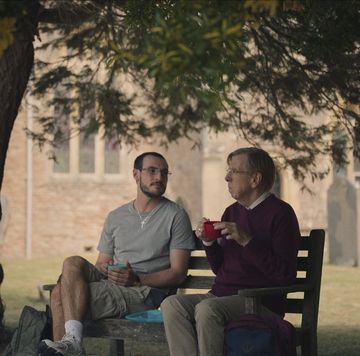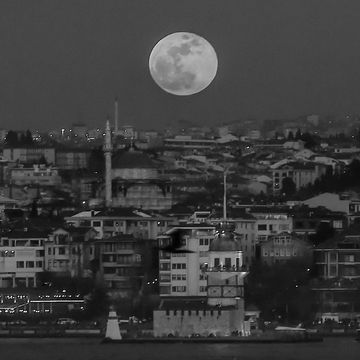In the early morning of July 17, 1918, Bolshevik troops led the Russian imperial Romanov family to the basement of a Yekaterinburg house. There, Tsar Nicholas II, his wife Tsarina Alexandra, and their five children—Olga, Tatiana, Maria, Anastasia, and Alexei—were murdered, allegedly at the command of Vladimir Lenin (though no paper trail exists). This marked the end of a 300-year family dynasty in Russia, and the beginning of a century of conspiracy theories, scandals, and mystery.
It’s also the event around which Mad Men creator Matthew Weiner has built his new anthology series The Romanoffs. That’s not to say The Romanoffs is a faithful historical recreation of world events. Quite the opposite, in fact. Though we do see the murders in the opening credits of the first episode, this isn’t a series about any known living or dead Romanov family members—or even any of the many imposters over the years.
Instead, The Romanoffs is more inspired by the mystery of the Romanov family and follows a collection of fictional, modern-day individuals who claim to be related to the the Russian Imperial Family. Even though one doesn’t need a historical knowledge of Russian history to understand The Romanoffs, knowing the basics provide context to the Amazon show and helps to expand on the themes explored throughout the series.
What events led to the assassination of the Romanov family?
There are decades of history building up to this moment, but the TL;DR story is that in the wake of WWI, Russia was slow to industrialise, the country was reeling from economic decline, and faith in the Royal Family was at an all-time low. In February 1917, Russians were revolting against the monarchy, protesting starvation and food rationing and the inept monarchy (during this time, Princess Alexandra and Nicholas II had been seeking the council of Grigori Rasputin, a holy man who the people of Russia greatly distrusted). These protests ended in bloody conflicts between revolutionaries and the Russian Army. This ended with Tsar Nicholas II abdicating and a Russian Provisional Government placed in his stead. The Romanov family was placed under house arrest and eventually moved out of the then-Russian capital of St. Petersburg.
Why was the slaughter of the Romanov family shrouded in such mystery?
The murder of the Romanov family was carried out in secrecy, likely because the slaughter of innocent children would not reflect well on Lenin, who came to power after the Russian Revolution. He wisely never connected himself via a paper trail to the order. But the events of the actual slaughter were strange as well. It’s often believed that the guards charged with carrying out the orders were drunk at the time and had difficulty bringing themselves to murder the children. Each guard was supposed to shoot a different family member, although they all aimed their guns elsewhere and began firing wildly. After the first shots, the family was still alive, mostly because they had sewn their jewels into their clothing, which had stopped some of the bullets. They then were forced to walk through and stab the wounded family members with their bayonets. The whole thing lasted 20 minutes.
What happened after the massacre?
Well, the soldiers bungled this, too. Two of the daughters were supposedly still alive when the bodies were being carried out, which is one detail that has inspired the legend that the youngest daughter, Anastasia, had survived. To insure that no one would ever discover what happened to the family, the bodies were stripped naked, burned with acid and fire, and then buried in unmarked graves. Throughout the last century, the identity and location of these bodies have been a global controversy. The new government released the news that Nicholas II had died, but it refused to confirm the status of the wife and children.
Were there any surviving Romanovs after the massacre?
About a dozen Romanovs were able to flee Russia as the Bolsheviks seized power in 1917. These included Nicholas’s mother, Maria Feodorovna; his sister, Xenia; and her husband, Alexandr. They were evacuated on warships from their Crimean estate by George V of England. By 1920, only 35 Romanovs remained alive.
What’s the deal with Romanov imposters?
Given the mystery and debacle of the assassination of the Romanov family (and the missing bodies), people have held out hope for years that some of the children might have escaped. The identity of Anastasia, in particular, has been subject to the most fascination. Famously, Anna Anderson (whose real name was Franziska Schanzkowska) claimed in 1920 to be Anastasia. Some surviving members of the Romaov family even visited Anderson and confirmed that she was indeed an imposter. Others have claimed to be the youngest Romanov daughter, including Natalya Bilikhodze, who traveled to Russia in 2000 to claim the Romanov fortune. There have also been imposters of Alexei, Olga, Tatiana, and Maria. But Anastasia has become the stuff of legend and fantasy, even becoming the subject of a popular animated movie in 1997 (which is pretty dark, when you consider the real life events).
What actually happened to the bodies then?
The Russian government spent decades attempting to erase the murder of the Romanov family from history. But it wasn’t until 1991, just before the dissolution of the Soviet Union, that nine bodies were recovered during an investigation launched by President Boris Yeltsin. Using modern-day DNA testing of the Romanov family, scientists were able to confirm that these bodies belonged to Nicholas II and his family. Eighty years later, the Romanov family was finally put to rest in St. Petersburg.
Who are the known Romanov descendants alive today?
The modern descendants of the Romanov family include Prince Philip, Prince Michael of Kent, Duke of Westminster Hugh Grosvenor, King Constantine II of Greece, Grand Duchess Maria Vladimirovna, Grand Duke George Mikhailovich, Olga Andreevna Romanoff, Francis-Alexander Mathew, Nicoletta Romanoff, Olga Andreevna Romanoff, and Prince Rostislav Romanov.
Why does any of this matter today?
We humans have a pretty unhealthy obsession with royalty of any type. Just look at the fervour surrounding the royal wedding of Meghan Markle and Prince Harry. Add to that the mystery and drama of the end of the Romanov family, and it makes for a pretty incredible narrative. But, in a time where we’re also becoming more and more infatuated with our roots—given the rise of DNA testing services—it’s only natural that we’d return to one of the most famous family lineage stories of all time.
It’s historically pertinent now, given the unstable relationship between the United States and Russia. You can draw a direct line from the events of 1917 and the Russian Revolution to the rise of Vladimir Putin and our adversarial relationship with the country. Putin himself has even become involved in the story, having rejected the previous findings to appease the skeptical Russian Orthodox.
Matt Miller is a Brooklyn-based culture/lifestyle writer and music critic whose work has appeared in Esquire, Forbes, The Denver Post, and documentaries.














